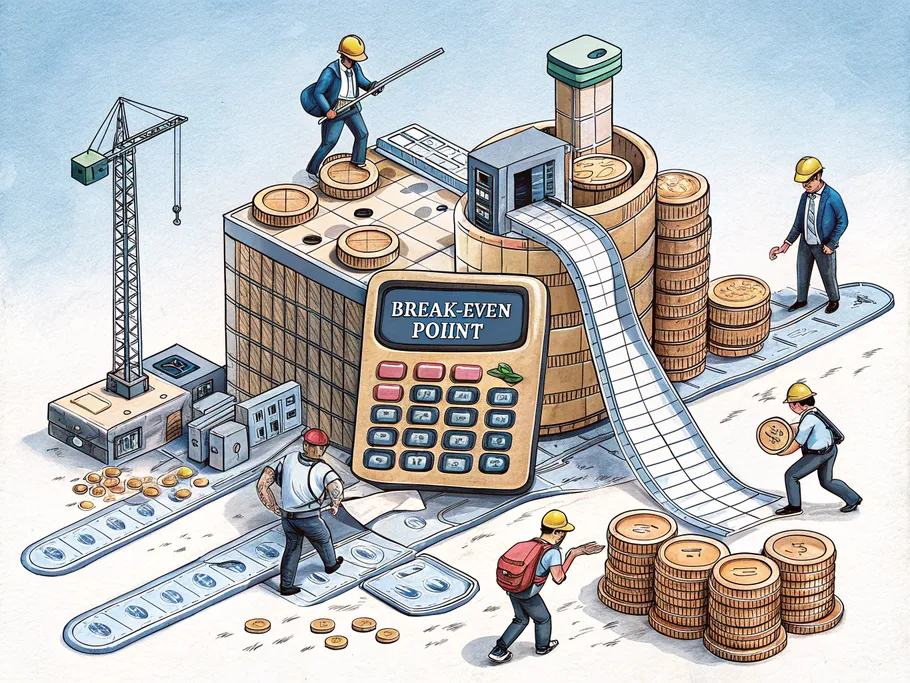Every product pricing strategy in marketing – whether it’s a “limited-time discount,” a sneaky add-on fee, or a psychology-backed charm price – boils down to one truth:
You’re not selling products. You’re buying customers.
Read that again.
Once you internalize it, every pricing decision becomes less emotional, more strategic – and MUCH more profitable.

Every price you set should be set with the intention to maximize profit while decreasing the cost of acquiring a sale.
Pricing is such a deep and complex topic, I love it.
In this article, I’ll unpack the basics of pricing, how it works in the wild, and how you can start thinking like a founder who isn’t afraid to pay (a little) now to win a loyal customer for life.
As I’ve already hinted above, pricing is not just about “making more money”.
Use it as a strategic tool that influences behavior. Think of your price as a ‘signal’. It tells people:
And most importantly, it tells people when to buy. (That’s why urgency-based pricing works so well.)
When you run a discount, change your base price, or introduce a free trial, what you’re really doing is increasing motivation.
You’re saying:
“If you act now, you get a better deal. And if you’re part of this specific group (early birds, new customers, loyal members)… you win.”
Ready to get your mind blown?
Every pricing strategy is just a version of “paying to speed up customer acquisition”.
Once that sinks in, you’ll never look at discounts the same.
Every startup should live and die by two numbers: LTV and CAC.
LTV = Lifetime Value
A.K.A. The total money you’ll earn from a customer over their lifetime.
CAC = Customer Acquisition Cost
A.K.A. The money you spend to acquire that customer, such as ads, discounts, commissions, referral rewards, etc.
If your LTV is $1,000 and it costs you $250 to get that person in the door, you’re sitting pretty.
But if your LTV is $200 and your CAC is $400… you’re paying for attention you can’t afford.
Now… Pricing strategies are just ways to lower CAC and increase LTV without needing to pour more money into ads.
Let’s illustrate this with a few examples.
Let’s say your service costs $500. (did you read about the cost-based pricing, by the way?)
But instead of spending $200 on Facebook ads, you offer a “$200-off” launch deal to early adopters.
As a result, you save ad budget.
Your clients feel like they “won.” (and really, if it’s a quality product/service, they DID.)
You get a testimonial + feedback loop faster.
You’re not at the mercy of a platform.
You just bought a customer directly. And you probably spent less doing it.
This is the key mindset shift I want you to get from this:
Discounts aren’t “lost revenue.” They’re a direct investment in customer growth.
For more GENIUS insights (and dare I say, a whole plan), you should read my Startup Launch Roadmap.
You’ll learn everything you need to build your product, launch it, attract investments, and scale it to the moon. You can get the ebook here:
Here’s a pricing lesson buried deep in the UX of Booking.com, airline aggregators, and all the other companies that do this one thing we all hate…
… showing a very attractive price on the listing, and then slapping a ton of hidden fees at checkout.
“BETRAYAL!”, people shout, all around the world.
But if a big company pulls something like this, it’s 99.99% likely that it’s profitable for them.
Their goal is to get you DEEP in their funnel to skyrocket sales, even if the conversion rate itself drops.
Let’s walk through the math!
Let’s say 10,000 people land on your product listings. Here’s what typically happens:
That’s a 0.1% final conversion rate. Pretty standard.
However…
If you reduce the base price (even deceptively) and push more people down the funnel, total revenue often goes up – even if the final conversion percentage drops.
That’s why airlines still bury baggage fees and hotels still add “resort fees”.
Should… YOU deceive the world, too?
If your business depends on volume and you can afford a slight hit to trust for the sake of scale, then yes – this funnel optimization move might actually be profitable.
But if you sell high-touch services or rely on long-term retention, the short-term is NOT worth the long-term churn.
Trust.

One of the most fatal mistakes founders make is setting prices based on “what competitors charge” or “what they think people can afford.”
Let’s be clear: that is not a strategy. That is guessing.
If your goal is profit (and it should be), then pricing has to start with you, not the market.
Ask this instead:
What product pricing strategy would give me a healthy margin that fuels growth?
Then… reverse engineer what value you would need to deliver to make that price feel like a steal.
Let me be honest with you for a second…
Cheap products create cheap expectations.
If you’re not adding more value, stop competing on price. If you are adding more value, stop being afraid to charge for it.

Let me ingrain this into your mind even more with the following section:
Here’s something every service provider figures out eventually (usually after a few client horror stories):
The more someone pays you, the easier they are to work with.
High-paying clients:
When you’re cheap, people assume you’re desperate. And that’s how you end up with micromanagers, ghosters, and refund requests.
Have the courage to ask for more. Always ask for a price that makes you slightly uncomfortable to say or put on your website.
Just pair that high price with risk-reducing trust signals like:
It’s easy to say “charge more.” But how do you do that without scaring people off?
Here are 3 tactics that help:
“If it doesn’t work, you don’t pay. Or we work for free until it does.”
You don’t have to be absolutely extreme with the guarantee, and you should definitely make it conditional.
E.g., you don’t have to offer a money back guarantee if your offer doesn’t achieve their goals. If you’re not confident enough to say that, you can simply say:
“If my offer doesn’t at least make you your money back, I’ll work for free, and if even THEN it doesn’t work, I’ll refund you.”
See how this is still a very strong guarantee, while absolutely minimizing the chance of refunds?
Also, about making a guarantee conditional…
Not everyone should be entitled to a guarantee. Only the clients/customers who put in the work and give you everything you need to do amazing work.
“You only pay when you get results.”
This is a dream offer because it’s literally ‘free’ money. Business owners LOVE commission models, since there is virtually no risk.
But… only use this if you can deliver great results.
This is the ultimate trust-based pricing structure – and ironically, it can make you more money than fixed-price work, since the scale is uncapped (assuming you can always make people more money).
I’d say that proof is the most powerful way to minimize risk.
By proof, I mean:
Testimonials. Screenshots. Case studies. Before-and-after breakdowns.
The more proof you stack, the more justified your price feels. It’s quite simple, really. I urge you to screenshot/record every win you get, and share it everywhere.
The formula is this:
High price + low perceived risk = the most “obvious” offer on the table.
If you’re not standing out in your market, you have two choices:
Charge twice as much as competitors, and justify it with premium value.
Or…
Charge half as much, and dominate through volume or innovation.
Anything in between just gets ignored.
A middle-of-the-road product pricing strategy doesn’t make anyone feel anything. And the worst thing your offer can be is forgettable.
So… go extreme!
Force yourself to build an offer that either screams “holy sht, this is luxurious” or “holy sht, this is a steal.”
That’s how price becomes an emotionally charged decision. If I can recommend something, I’d say it’s better to go with the more expensive angle.
But that’s just me. Money hungry as always.

Here’s a misconception I want to destroy:
“Pricing tiers help us reach more people.”
Not really. That’s a side effect.
The real reason pricing tiers exist is to make the middle offer look irresistible.
Here’s how it works:
We call this price bracketing. And it’s the most elegant form of customer manipulation ever invented.
If you’ve got pricing tiers, use them to drive people where you want them. Don’t just let them pick whatever they want.
If you’re still randomly setting prices, basing them on feelings, or what your competitors are charging… it’s time to stop.
Here’s what you should remember:

Email subscription is available ONLY TODAY (oh, okay, and tomorrow).
Surely, we respect your inbox! Unsubscription works every day.

We’d love to tailor your experience — which of these best describes you?